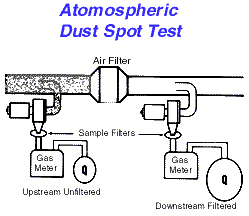| Air Filters Air Cleaners Air Purifiers Refills Chemicals Space-Gard Air Bear
|
|
 |

Air filter efficiency testing
- The Danger
Particles that are less than 2 microns in size will enter and remain in the lung linings and mucus membranes.
These particles can contain, mold, fungus, bacteria, pollen, dust mites, dust mite feces and other airborne respirable allergens. These are the particles you need to remove from your air.
The Big Lie
There are those that would have you believe that a washable type electrostatic air filter will protect you from these harmful particles. They don't...never did. In fact most electrostatic air filters are less then 10% effective in capturing dangerous respirable particles.The Numbers Game
- Well it would be pretty hard to sell any of these washable electrostatic air filters if they advertised a whopping 10% efficiency rating. Instead sellers of washable electrostatic filters advertise the results of a test that measures an air filters ability to capture large particles.
This test "the average synthetic dust weight arrestance test" has only one use, it gives the people selling the washable electrostatic air filter a high number to hype.
So the next time someone tries to sell you a electrostatic filter with a 95% efficiency air filter, ask them what the dust spot efficiency is? Silence.Here's how the tests work
Average Synthetic Dust Weight Arrestance Test
This test measures a filters ability to remove large particles. Most large particles are to heavy to stay suspended in the air and soon fall to the ground. Small particles are the ones which have the greatest potential to aggravate allergies.
An air cleaner is mounted in a clean test duct. A highly efficient filter is carefully weighed and mounted downstream from it, and then a measured quantity of synthetic dust is released into the duct. The downstream filter captures particles that get through the air filter.
That filter is weighed again, and the pre- and post-test weights are compared to establish a rating.
Atmospheric Dust Spot Test
This test accurately represents an air filters ability to capture fine respirable allergens.An air filter is mounted in a clean test duct, with highly efficient filters mounted upstream and downstream from it. Outdoor air is then introduced into the duct. The upstream filter catches a sample of airborne particles before they reach the air filter, providing a bench mark for later comparison with the downstream filter.
Ready to Build Your Custom Air Filter?

